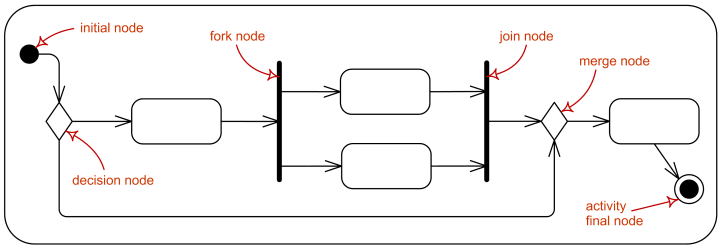UML Activity Diagrams
Uml defines thirteen basic diagram types, divided into two general sets:
- Structural
- Behavioral
Events in UML
- Signals: object sent asynchronously by one object and received by another
- Calls: method calls between objects (synchronous)
- Passage of time
- Change in state
Events can also be external or internal
UML Activity Diagrams
Activity diagrams show the workflow of a process from start to finish. Useful for parallel processing.

Components


Step to Construct
- Find system Actors, Classes and use cases
- Identify key scenarios of system use cases
- Combine the scenarios to produce comprehensive workflows described using activity diagrams
- Where significant object behavior is triggered by a workflow, add object flows to the diagram
- Where workflows cross technology boundaries, use swim lanes to map the activities
- Refine complicated high level activities
When to use Activity Diagrams
Use for:
- Analyzing use cases
- understanding workflow across many use cases
- dealing with multi-threaded applications
Do not use for:
- to see how objects collaborate
- to see how an object behaves over its lifetime